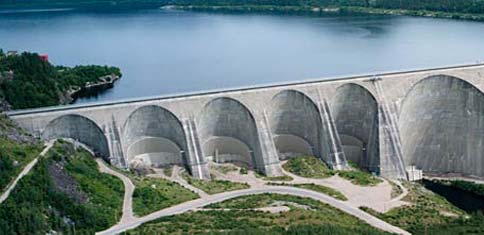It’s a project, or a series of projects, to stretch the imagination. It’s fraught with problems – economic, environmental and political. It’s been thought about before, but never seriously considered. So why would anybody dream about a pan-Canadian power grid?
The answer is that nobody would, at least not now. But circumstances change. As they change, what used to seem unthinkable and undoable might seem worth pondering.
Canada has a double challenge in energy policy: to increase supply of cleaner energy to meet larger domestic demand, and to improve the country’s greenhouse-gas emissions record. More hydro helps meet both challenges.
Just now, we are preoccupied with pipelines to move oil from Alberta’s bitumen deposits through British Columbia, the United States and Central Canada to New Brunswick. We know this is dirty oil, in that it produces perhaps 15 per cent more GHGs than conventional oil, which is one reason why the industry is having trouble securing the social licence to move and sell the oil. But is anybody thinking about how to move clean hydro around the country?
No, because for the longest time, pan-Canadian hydro was considered uneconomic. Moreover, every surplus kilowatt produced in Canada would be gleefully and greedily taken by the United States. That might still be true today, but then again, it might not.
Shale gas, now being found in great abundance in the United States, might allow power generation at costs competitive with or even below those of Canadian electricity, which has to be shipped over vast distances to southerly markets from northern parts of provinces such as Quebec, Labrador and Manitoba. The local costs in the United States will likely vary according to locality, but in areas where shale gas is abundant and close, switching to this fuel from really dirty coal might make sense. And it might be cheaper than bringing electricity from remote parts of Canada.
Canadians have built a national highway (sort of), long-distance pipelines from west to east, ocean-to-ocean-to-ocean communications networks and a bunch of national social programs, but we have never built a national electricity grid, which on the face of it is rather odd for a country with a large hydro surplus.
Provincial control of natural resources always got in the way of more extensive co-operation. Federal governments, not having jurisdiction, were reluctant to talk about the idea, let alone act. Instead, Ottawa intervened sporadically, as in the Harper government’s loan guarantee for Newfoundland’s project to bring hydro undersea from Labrador to Newfoundland, then on to Nova Scotia, New Brunswick and the United States.
Costs for a national project would be extremely high. Pierre Gingras, a Quebec analyst, has estimated (or perhaps we should say guesstimated) the cost at $22-billion over 20 years, not counting the cost of switching stations. This sounds like a staggering sum, but think about it on a per-year basis.
It would create a large number of jobs, give Canadian engineering companies big domestic opportunities, greatly reduce greenhouse-gas emissions and replace some existing and aging generating capacity that will cost a lot to renew anyway. If Canada ever gets around to putting a price on carbon – the sine qua non of intelligent climate-change policy that even the Canadian Association of Petroleum Producers says (nominally) is a good idea – then expanding hydro and its attendant costs would look even better.
If one factors in a price for carbon and the shifting energy situation in the U.S., a national grid is at least worth studying. Without the federal government acting as facilitator, prodder and partial financier, nothing will happen. The provinces have to be willing to come to a national table, as resource owners, suppliers or buyers of the hydro power.
Here is a vast national project of the kind for visionary countries. The current federal government would not spend an instant thinking about it. It doesn’t like the “vision” thing, isn’t much interested in climate-change mitigation and would be preoccupied with the costs but not the putative benefits.
But governments don’t last forever. What are civic society and opposition parties for in a democracy if not to think beyond the mentality of the incumbent one?
In case you’re looking for an energy project with ‘vision’
























Laissez un commentaire Votre adresse courriel ne sera pas publiée.
Veuillez vous connecter afin de laisser un commentaire.
Aucun commentaire trouvé